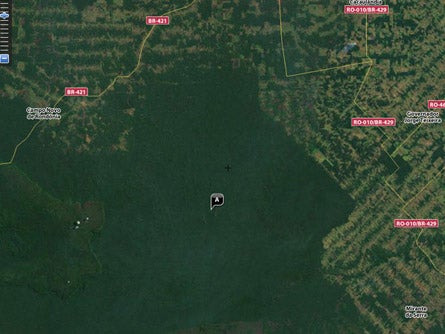The Last Man On Earth

Les Stroud and Bear Grylls, you’ve just been beaten as the ultimate survivor. Somewhere deep in the Amazon of Brazil, a man hunts in the bush and beds down in a series of palm-thatched huts, the sole remaining member of his tribe. Government officials estimate he’s in his late 40s—they discovered him when logging companies threatening to destroy his area of forest began spreading rumors of a wild man in the woods. They tried to initiate contact in order to protect him—he responded by shooting an agent in the chest with an arrow.
Now they’ve taken a different tack: They’ve instituted a 31-square-mile buffer zone around him to prevent contact, so that he might live out the rest of his days undisturbed. From the aborted attempts at contact, they’ve learned a few things about his way of life:
He eats mostly wild game, which he either hunts with his bow-and-arrow or traps in spiked-bottom pitfalls. He grows a few crops around his huts, including corn and manioc, and often collects honey from hives that stingless bees construct in the hollows of tree trunks. Some of the markings he makes on trees have suggested to indigenous experts that he maintains a spiritual life, which they’ve speculated might help him survive the psychological toil of being, to a certain extent, the last man standing in a world of one.
Nobody really knows what happened to the rest of his tribe; some speculate they were driven off the land or even killed by rapacious loggers. Based on conversations with other surrounding tribes, he doesn’t seem like a castoff from another tribe—he’s just the last survivor of his own.
Oddly, officials think that growing technology could help save the last man rather than reveal him. Google Earth can be used to monitor the boundaries of his land and ensure no one is attempting to encroach, and high-resolution infrared cameras from high-altitude planes can check on him without flying low enough to create a disturbance. Most of all, Brazilian indigenous experts think the rapid spread of his story through modern channels might focus attention on him and keep land-grabbers from attempting a pillage.
I think we can be sure of the spread of his story; this has movie written all over it. I know I’d watch it—would you?
—Ted Alvarez
Slate via GetOutdoors